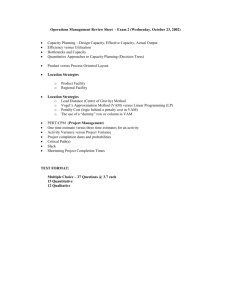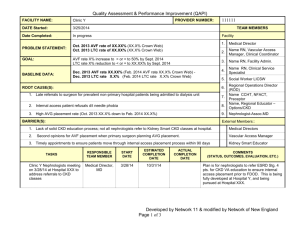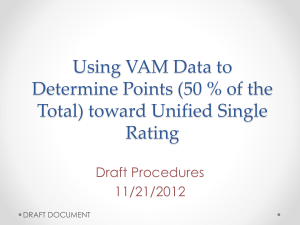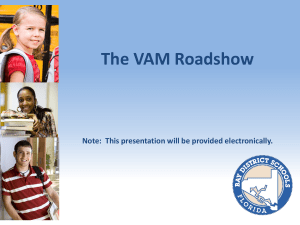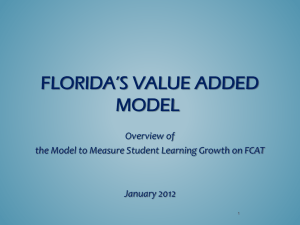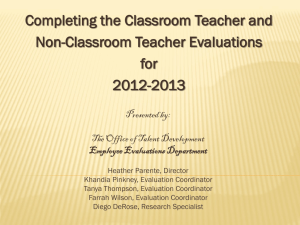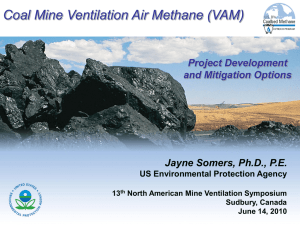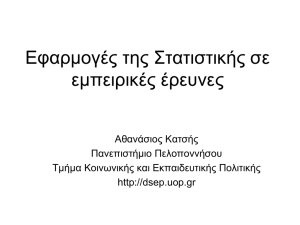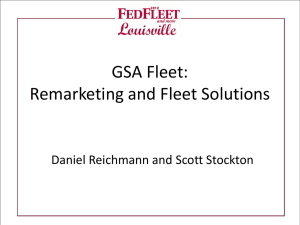Federal Fleet Performance: What`s next?
advertisement
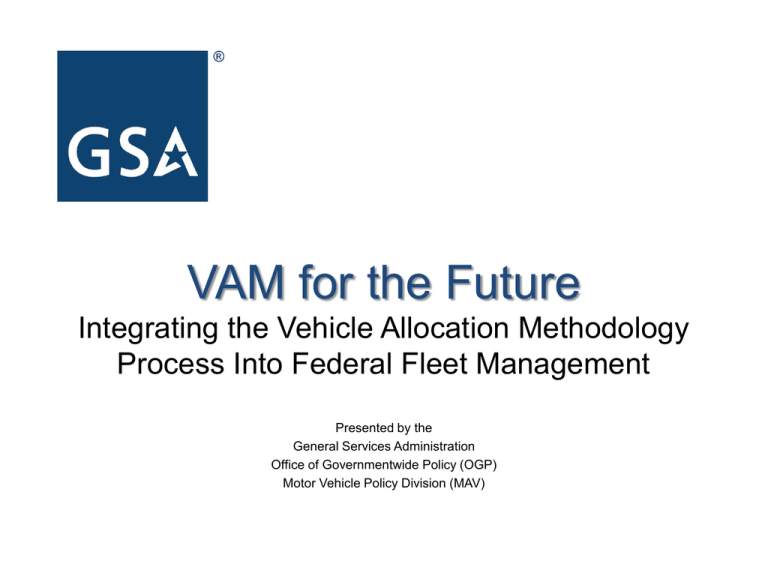
VAM for the Future Integrating the Vehicle Allocation Methodology Process Into Federal Fleet Management Presented by the General Services Administration Office of Governmentwide Policy (OGP) Motor Vehicle Policy Division (MAV) Where We’ve Been: The Initial 2011 VAM • Presidential Memo (May 2011) required: – Each agency identify its optimal fleet using 2011 baseline – Fleet Management Plan to achieve optimal fleet by 2015 – Review & recommendations by GSA – Inclusion in agencies’ annual Strategic Sustainability Performance Plan – Agencies to acquire only AFVs (light duty) after 2015 Where We’ve Been: The Initial 2011 VAM • First VAM cycle completed, Results projected from 2011 through 2015: – Optimal fleet is 35,500 vehicles smaller, 10% of non-exempt vehicles studied – Projected 13% increase in AFVs – Projected 33% decrease in conventional vehicles – Potential annual cost avoidance of $240 million Where We’ve Been: The Initial 2011 VAM • What helps accomplish an effective VAM: – Engagement across the agency communities (Senior leadership, Fleet/logistics, Finance, Sustainability) – Established agency fleet network (the ability of a dispersed fleet to communicate and coordinate) – Reliable data (agency-wide Vehicle Management Information System) – Defined utilization criteria (specific miles or hours of use in a time period) Where We’re Going: VAM Forward • What is needed: – Tracking progress toward optimal fleets – Ensuring compliance with 2015 all-AFV acquisition target – Annual updating Fleet Management and Strategic Sustainability Performance Plans – Streamlining and consolidating reporting requirements Where We’re Going: VAM Forward • Primary result of a VAM is identifying baseline/optimal fleets – Initial VAM accomplished that – Out-year VAM process needs to review, measure, and update Where We’re Going: VAM Forward • Most agencies have done the hard part – All agencies must annually review progress against plan – Optimum Fleet Attainment Plan changes: • Changes in FY12 FAST Report inventory or AFV acquisitions compared to VAM goals for 2012 should be explained in the agency Fleet Mgmt plan and Sustainability Plan • Also explain changes in out-year projections – Update Fleet Management and Strategic Sustainability Performance Plans as necessary Where We’re Going: VAM Forward • FAST will remain the vehicle for VAM reporting/updating: – FAST will be enhanced to accept updates in annual Fleet Management plans – FAST will also accept actual acquisitions/disposals and out-year acquisition/disposal projections – Primary FAST data call and VAM reporting will be integrated Where We’re Going: VAM Forward • VAM data call will begin concurrent with primary FAST data call on October 1 but extends beyond it to March 15 – Does not conflict with other reporting requirements – Gives time to accumulate actual data for updates – Uses existing FAST reporting hierarchy to collect inventory, acquisitions, disposals – Allows agencies flexibility in when they report – GSA will provide feedback in mid-April well before June Sustainability Plans due Where We’re Going: VAM Forward • Primary FAST data call: Opens October 1 • New: FAST VAM data call: Opens October 1 • Primary FAST data call: Closes Mid-December ( Data transfers to VAM from FAST data call) • New: FAST closes for VAM submissions/updates: midMarch • New: GSA provides agencies VAM feedback: mid-April • Sustainability Plans due: in June • OMB A-11 reporting due: August (FAST)* Goal: Make Process Easy & Effective • FAST will add an additional out-year each cycle: every year, add a year • VAM report will autofill with updates from primary FAST data call • Potential to consolidate with A-11 data in future • Consolidation of input forms will reduce/simplify data entry Goal: Make Process Easy & Effective GSA seeking OMB collaboration on consolidating VAM and A-11 processes – VAM already has out-year inventory planning – VAM could incorporate out-year budget numbers OMB needs – VAM Management Plan could incorporate A-11 narrative – VAM, A-11, and primary FAST reporting screens could be integrated VAM for the Future Questions/comments: vehicle.policy@gsa.gov
